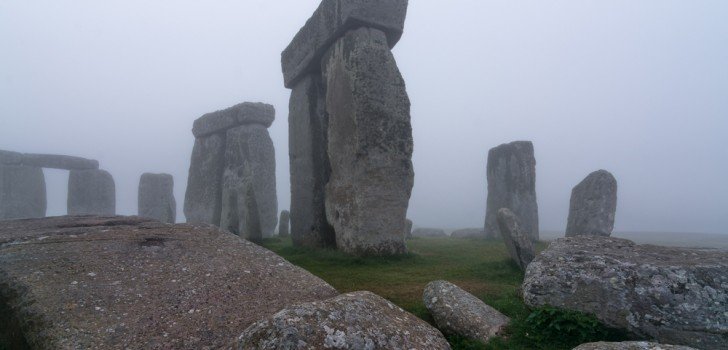Archaeologists in England say they have discovered remains of a previously undetected stone monument within two miles of the famous Stonehenge. Using ground penetrating radar, a series of nearly 90 standing stones were found hidden under three feet of earth near a former discovery known as Durrington Walls. The discovery adds another chapter to the extensive network of monuments in the English countryside.
Located above the new discovery, Durrington Walls is believed to have been built one century after Stonehenge, and dwarfs its more famous neighbor. The original Stonehenge is believed to date back 4,500 years and the new monument is believed to have been built during or before the same time period.
Discovered as part of the Stonehenge Hidden Landscapes Project (SHLP), the discovered stones measure up to nearly fifteen feet in size, dwarfing those at Stonehenge which measure just under seven feet. They are found along the south-eastern border of Durrington Walls in a c-shaped design. The material of the stones is currently unknown, but is suspected to be sarsen sandstone, the same material that composes the monoliths at Stonehenge.
Professor Vince Gaffney, who is a leading archaeologist with the project stated, “We’re looking at one of the largest stone monuments in Europe and it has been under our noses for something like 4,000 years…These things are theatrical. They’re designed to impress and impose; to give the idea of authority to the living and the dead.”
Current theories about such monuments hold that they were centered around the summer and winter solstices, due to their alignments with these astronomical phenomena. Remains of animal teeth near the Durrington Walls were isotopically analyzed and support the theory that individuals may have travelled from as far away as the Scottish Highlands in order to take part in the ceremonies.
Stay Connected